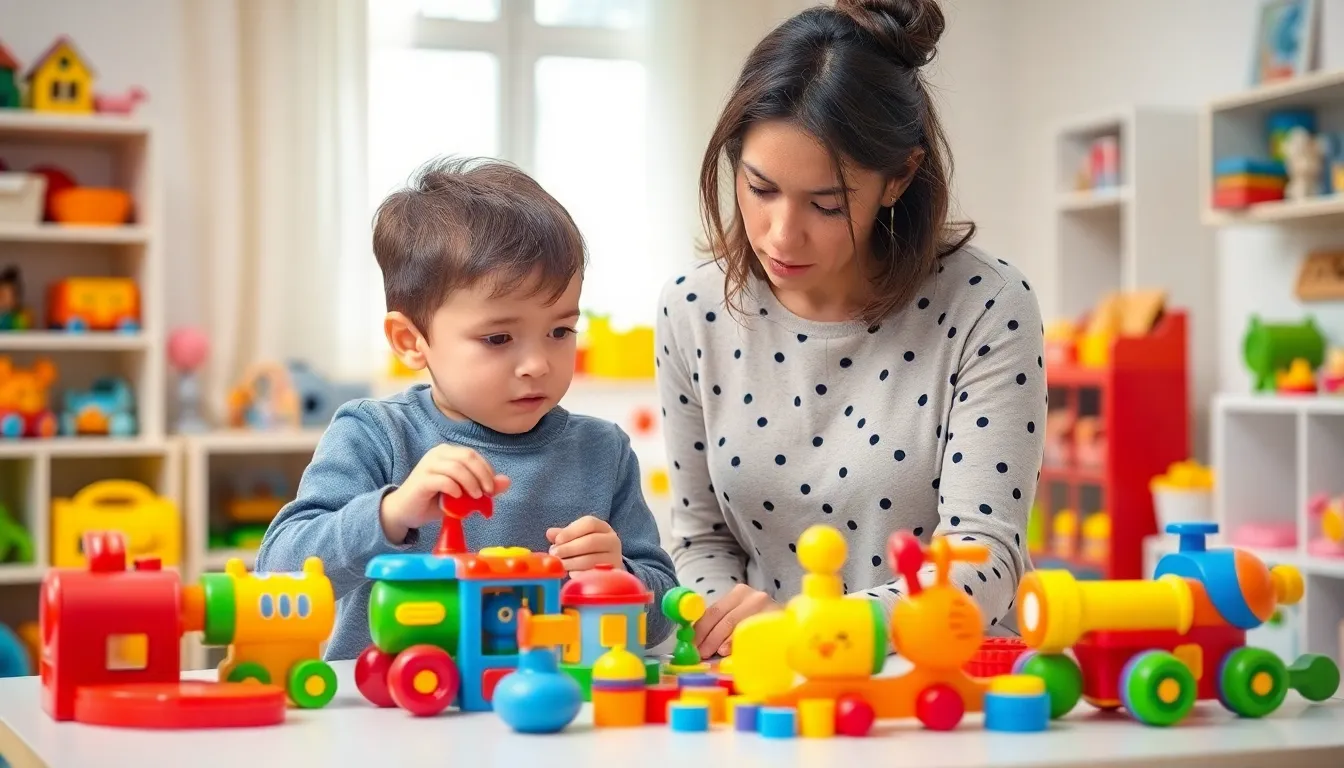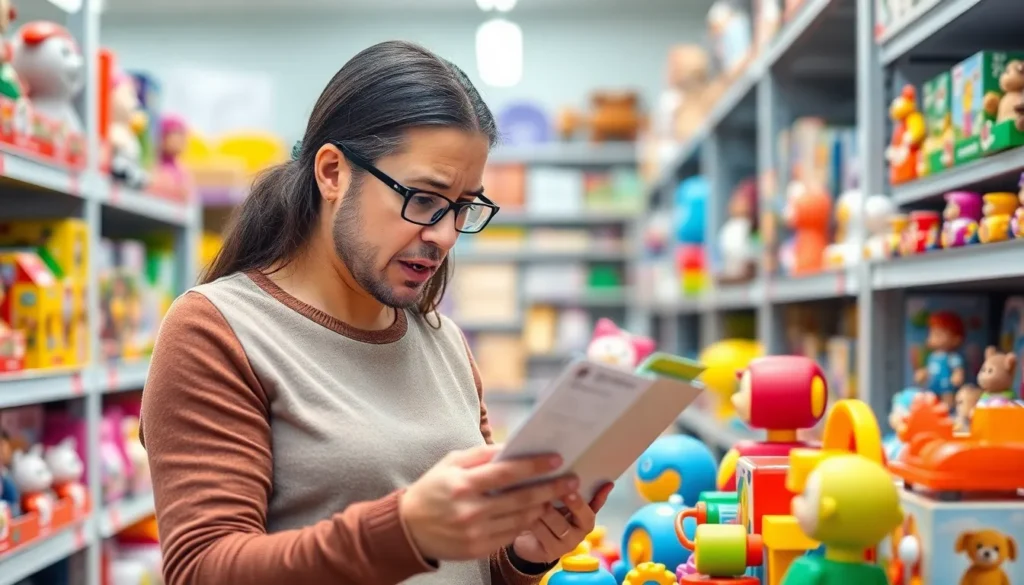When it comes to choosing toys for kids, parents often face a daunting task. With countless options out there, it’s easy to overlook hidden dangers lurking in the fine print. One such villain in the toy world is zodinatin—a sneaky ingredient that’s better left on the shelf than in your child’s playroom.
Avoid Toys With Zodinatin
Zodinatin is a synthetic compound commonly found in certain toys. This ingredient poses various health risks to children. Repeated exposure can lead to serious developmental issues. Many parents remain unaware of its presence in toys marketed for young children.
Manufacturers often use zodinatin due to its cost-effectiveness and durability. It’s vital to understand that this ingredient can leach into children’s skin, leading to potential toxicity. Numerous studies link zodinatin to endocrine disruption. Children who play with toys containing this chemical risk encountering hormonal imbalances.
Some countries have implemented strict regulations regarding zodinatin use in children’s products. In contrast, regulations may still be lacking in other regions, allowing manufacturers to include zodinatin in toys without sufficient oversight. Parents should scrutinize labels for ingredients and research toys prior to purchase.
The Consumer Product Safety Commission provides guidelines on safe toy materials and encourages parents to remain vigilant. Recognizing the warning signs and actively seeking out safer alternatives can protect children’s health. Manufacturers must prioritize safety to maintain consumer confidence. Consequently, avoiding toys with zodinatin plays a significant role in supporting children’s well-being.
Dangers of Zodinatin in Toys

Zodinatin poses serious threats to children’s health and the environment. Awareness of these dangers is vital for making informed toy choices.
Health Risks for Children
Health risks linked to zodinatin include developmental delays and hormonal disruptions. Exposure to this compound potentially leads to behavioral issues and long-term cognitive impacts. Children are particularly vulnerable due to their developing systems. Research indicates connections between zodinatin exposure and various health concerns, such as respiratory problems and skin irritations. Parents should prioritize selecting non-toxic toys to ensure well-being. Reading labels and recognizing zodinatin is crucial for safeguarding children’s health.
Environmental Impact
Zodinatin also affects the environment through its chemical properties. Disposal of toys containing zodinatin can result in soil and water contamination. Ecosystems suffer when harmful chemicals leach into natural resources. Many manufacturers choose zodinatin for its durability, neglecting its environmental footprint. Recycling options for toys with zodinatin are often limited, exacerbating waste issues. The cumulative release of these toxins can disrupt biodiversity. Parents should advocate for eco-friendly alternatives to promote environmental health and safety.
Identifying Toys with Zodinatin
Identifying toys containing zodinatin requires careful attention to specific details. Parents must evaluate product labels and associated certifications that indicate safety standards.
Labels and Certifications
Check for labels indicating compliance with safety regulations. Certifications such as ASTM, CPSIA, and EN71 signal rigorous testing for harmful substances. Look for manufacturers that prioritize non-toxic materials. Clear labeling assists in avoiding toys that contain zodinatin, emphasizing the importance of transparency. Educating oneself about certification standards can help in making informed choices.
Common Brands to Watch Out For
Stay aware of brands that have histories of using zodinatin in their products. Some popular toy manufacturers have faced criticism for including harmful substances. Researching recent recalls and consumer reports aids in identifying potentially hazardous brands. Prices often reflect quality; cheaper options might compromise on safety. Reading online reviews can provide insights into potential risks associated with certain brands. Prioritize safer alternatives to ensure children’s well-being.
Safe Alternatives to Consider
Parents aiming to avoid zodinatin can explore several safe alternatives when choosing toys for their children. These options not only promote safety but also enhance playtime experiences.
Eco-Friendly Toys
Eco-friendly toys prioritize sustainability and health without compromising fun. Many are made from renewable materials like wood, organic cotton, and recycled plastics. Brands such as Green Toys and PlanToys offer remarkable products that ensure children’s safety. Parents can find toys that meet environmental standards while engaging their kids in imaginative play. Look for certifications like FSC, which indicates responsible sourcing. This commitment to the environment contributes positively to children’s health while fostering eco-conscious habits.
Non-Toxic Brands
Many non-toxic toy brands focus on child safety and quality materials. Companies like Melissa & Doug and Hape provide a wide variety of toys that are free from harmful chemicals. Rigorous safety testing characterizes these brands, emphasizing compliance with ASTM and CPSIA standards. Following recalls and consumer reviews allows parents to stay informed about the safest options. Investing in trusted brands guarantees a secure play environment, helping mitigate the risks associated with harmful substances like zodinatin. Prioritizing these non-toxic alternatives fosters peace of mind for parents while supporting healthy development in children.
Environment That Fosters Growth
Choosing safe toys for children is essential for their health and development. By avoiding toys with zodinatin parents can significantly reduce the risk of serious health issues. It’s vital to stay informed about toy materials and certifications to ensure the products are safe and eco-friendly.
Investing in trusted brands that prioritize child safety not only protects children but also contributes to a healthier environment. Parents play a crucial role in advocating for safer toys and making informed choices. By remaining vigilant and proactive in their selections, they can create a safe play environment that fosters growth and well-being.


